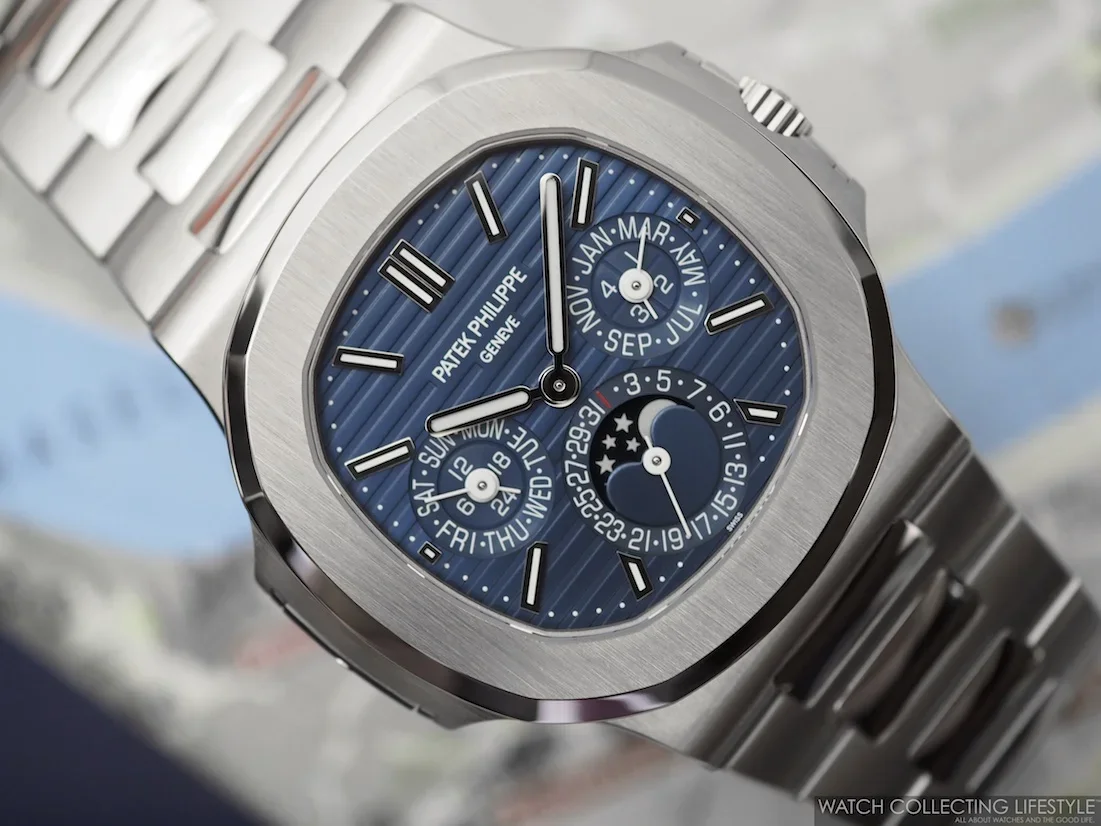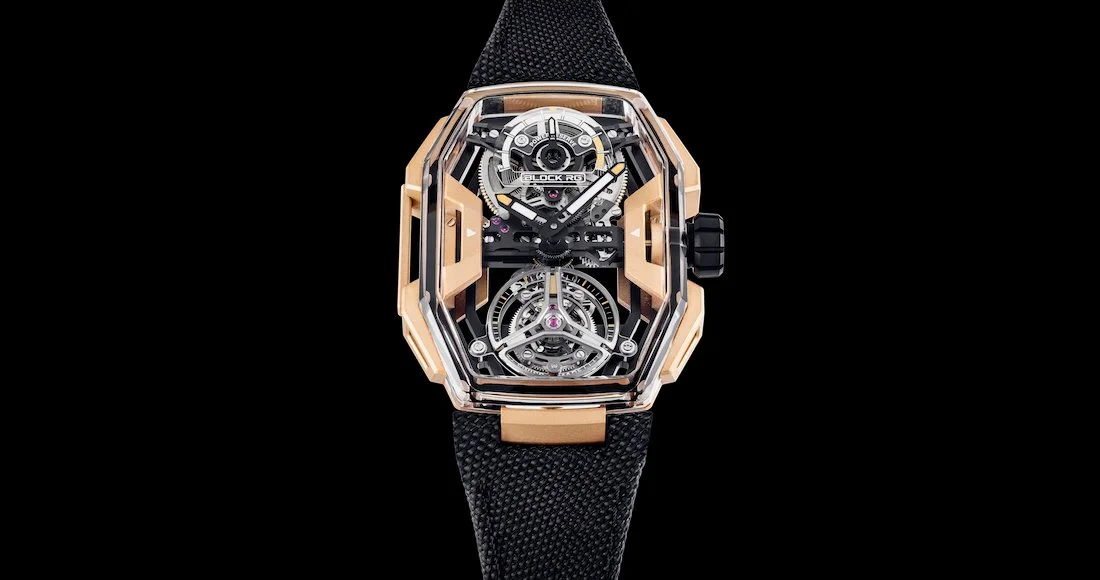Initially available in titanium, Carbon TPT, Red Gold and Carbon TPT, and Grey Quartz TPT, now comes the Dark Yellow Quartz TPT and Pastel Blue Quartz TPT iterations of the impressive Richard Mille RM65-01 Split Seconds Chronograph. Five years of development representing a two-fold achievement: the creation of a split-seconds chronograph —the most complicated automatic winding watch that has ever come out of the RM workshops— and its production beyond the limited series. During its design, this high-frequency model was enhanced with a new gearcase in the form of a function selector in the crown and a calibre’s rapid winding button. A first. With a case in Quartz TPT measuring 44.50 x 49.94 x 16.10 mm, the new Richard Mille RM 65-01 Split-Seconds Chrono is a feat of horology.
The start or stop of the chronograph is done via the pusher located at 2 o’clock. The hands are reset by pressing another pusher, located at 4 o’clock, and by pressing the pusher at 10 o’clock, you can stop the split-seconds hand to read an intermediate time while the chronograph is engaged. Pressing the pusher again allows the split-seconds hand to rejoin the chronograph hand. There is a 30-minute totalizer at 3 o’clock, a 12-hour totalizer at 9 o’clock, a running seconds indicator at 6 o’clock, a selector indicator at 5 o’clock, and a vertical date aperture at 11 o’clock.
The design and execution of the watch demonstrates a highly conceptual holistic approach to the movement, case, and dial. As a result, everything has been constructed according to extremely rigorous specifications, in the manner of the analytical engineering methods used in the design of Formula 1 racing cars, where the chassis and the engine are developed in complete harmony. For example, a casing ring is no longer used, and the movement is mounted on chassis mounting rubbers —ISO SW— fixed by grade 5 titanium screws. Features such as these are evidence of uncompromising workmanship. The tripartite case is water resistant to 50 meters, ensured by 2 Nitrile O-ring seals. The case is assembled with 20 spline screws in grade 5 titanium and abrasion-resistant washers in 316L stainless steel.
Given its technical edge, which translates to a movement with 480 components, we knew from the beginning of its construction that the development phases would be long and complex because all the “commands” had to be scrupulously checked. But the advantage is that once stabilised, this movement is magnificently consistent. This split-seconds chronograph was subject to a battery of merciless tests that had to demonstrate its correct function in any situation. Salvador Arbona, Technical Director for Movement
This chronograph honed for the 21st century has a high-frequency balance with variable inertia —5 Hz or 36,000 vph— for superior timekeeping accuracy over an extended period and can calculate the time to a 1/10th of a second. A genuine racing engine with a split-second hand to calculate intermediate times.
The integrated 60-hour power reserve automatic movement boasts unfailing consistency with its 6-column wheel architecture and vertical coupling. Like a mechanical brain, this castellated piece orchestrates the controls and can be seen through the base. A mechanical cathedral standing on a grade 5 titanium chassis supported by grade 5 titanium bridges, it receives its energy from a fast-rotating barrel that maintains ideal torque for energy transmission for the full duration of its 60-hour power reserve. The barrel’s automatic winding also ensures the watch sustains optimal torque whilst worn on the wrist.
The chronograph was also subjected to a battery of merciless tests to demonstrate its capacity to function under any circumstances. These included everything from shock and drop simulations to accelerated 10-year aging phases for all functions, by way of waterproof tests and magnetic field resistance trials.
In another milestone, Richard Mille developed its first in-house patented rapid-winding mechanism, activated by a pusher at 8 o’clock. In 125 presses, the barrel is fully wound, ready to time your next event. This highly practical function, described as ‘very playful’ by Richard Mille’s engineers, was particularly difficult to develop because of its high levels of torque transfer. During the aging tests, the function was activated thousands of times. The model was also enhanced with a new gearbox, taking the form of a function selector housed in the crown. This system makes it possible to switch between ‘traditional’ winding (W), semi-instantaneous date adjustment (D), or setting the time (H), all by simply pressing the crown.
Quartz TPT and Carbon TPT, which possess remarkable damascene surfaces, are composed of layers of parallel filaments obtained from separating silica and carbon threads. Quartz fibres are generally used for very high-performance applications due to their resistance to high temperatures, their strength and their transparency to electromagnetic waves. Fibres are aligned in layers no thicker than 45 microns and saturated in a grey resin developed especially for Richard Mille. These layers are then stacked using an automatic positioning system that changes the orientation of the fibre between each layer by 45 degrees. After being heated to 120 degrees Celsius and subjected to a pressure of 6 bars, they are machined on a CNC machine at Richard Mille’s manufacturing facilities. Carbon TPT is made by an identical process, but from carbon threads.
Sticker Price USD 380,000. For more info on Richard Mille click here.





























